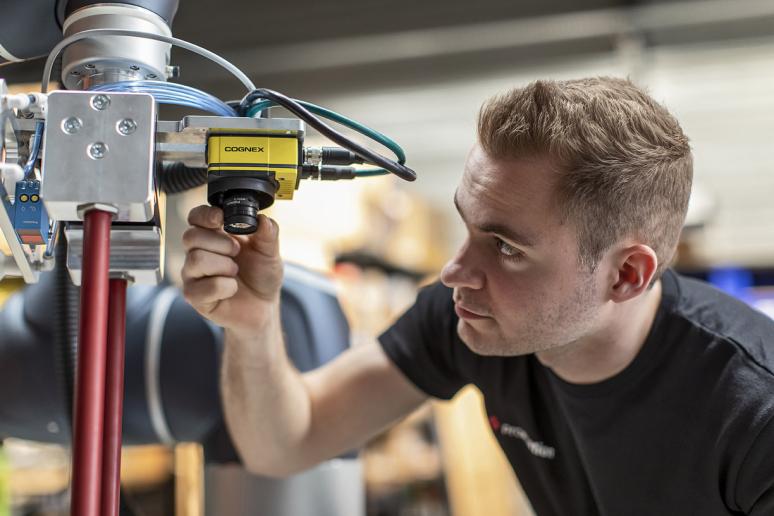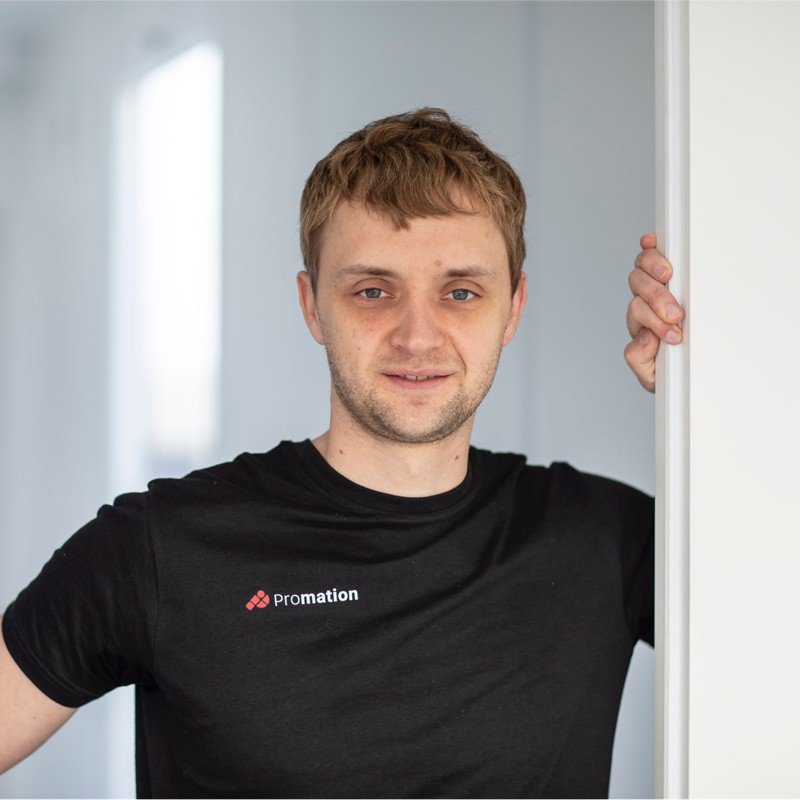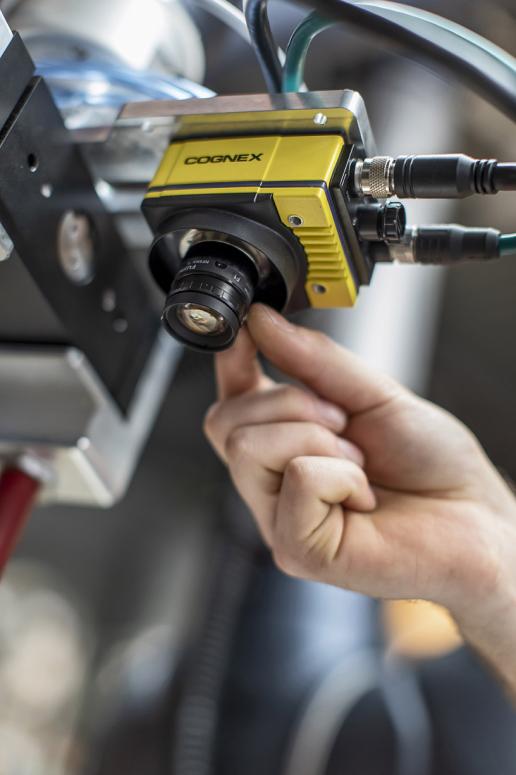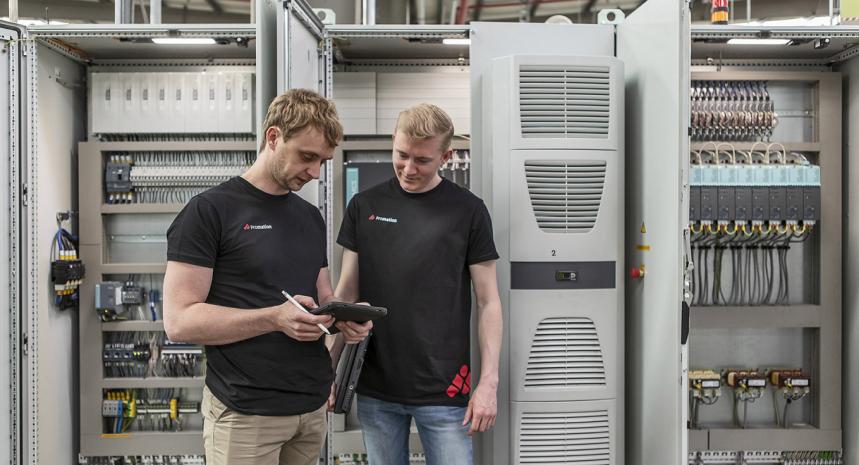How does AI work in vision systems?
In recent years, the integration of AI into vision systems has drastically changed how production lines are monitored and optimized.
Traditional vision systems could only perform black-and-white checks, determining good or bad based on static parameters. This limited their ability to identify variable errors, especially when those errors were not predefined.
However, AI has completely changed this. Modern vision systems can now detect much more variations and complex deviations, enabling companies to make their production process more stable and efficient.
In this blog post, we delve deeper into the possibilities these AI systems offer your business.

The evolution of vision systems
In the past, vision systems were rigid. They could only operate based on strict parameters. For example, if you wanted to check a cookie for defects, you had to specifically define what that defect was, such as a crack or an irregular size.
This was a black-and-white approach: it was either good or bad. This meant that random or unprogrammed errors, like cracks or irregularities that always look different, were often missed.
The introduction of AI
With AI on board, vision systems can do much more. They learn what a good product looks like and can therefore detect not only specific defects but also random deviations that were previously difficult to identify.
A cookie with a small crack looks different every time, but an AI-based system recognizes those variable cracks and knows when something is wrong.
AI and vision systems: how it works
The core of AI-based vision systems is machine learning. At Promation, we train the cameras of our vision systems by teaching them what a perfect product looks like.
This means that we feed the cameras thousands of images of correct products, such as cookies, buns, or bottles, so the AI knows what the ideal result looks like and can anticipate variations.
Machine learning
Consider, for example, a cookie production line. Each cookie may have a different shape or size, or there may be differences in the applied chocolate lines. A traditional vision system would struggle to interpret these variations, but with AI, the camera can learn which deviations are normal and which should be marked as errors. The same applies to seeds on buns or printed codes on bottles, which always look different.
Examples of AI applications in vision systems
The applications of AI in vision systems are numerous and varied. Here are some concrete examples of how this technology takes production controls to the next level:
- Carbon inspection: carbon particles consist of complex white and black patterns that are difficult to interpret with a standard camera. AI-based vision systems can detect deviations in carbon, even when the patterns are variable.
- Chocolate lines on cookies: these cookies never look the same. An AI system can learn how these lines typically appear and detect deviations that indicate a cookie does not meet quality standards.
- Seeds on buns: AI can determine if enough seeds have been applied to a bun, even if the pattern of seeds is always different. This was previously a huge challenge for traditional systems.
- Printed codes on bottles: printed codes can look slightly different on each bottle, depending on the packaging and placement. An AI system can accept variations in the code and still make corrections if there are errors in readability.
- Expiration dates on transparent packaging: checking expiration dates on transparent packaging is a complex task because the background constantly changes due to the product's position in the packaging. With AI, the camera can compensate for these variations and reliably check the expiration date.
- The benefits for your production line: AI in vision systems offers enormous benefits for companies with a production department. It makes checks much more stable and reliable, especially when dealing with variable products.
Traditional systems require you to set clearly defined errors in advance, while AI systems can learn from examples and automatically detect variable errors. This makes the inspection process much more flexible and accurate.
Cognex cameras with AI features
At Promation, we use the latest Cognex cameras with AI functionality to make our vision systems as powerful as possible. These cameras can not only detect errors but also constantly learn, meaning that your production process becomes more efficient as more data is collected.
This
- reduces error margins,
- improves product quality,
- and increases production speed
- without sacrificing accuracy.
The future of AI in vision systems
The evolution of AI in vision systems is just beginning. As the technology continues to develop, we will see even more applications that further optimize the production process. Think of even better image recognition, faster processing capabilities, and integration with other smart production systems like cobots.
By integrating AI-based vision systems into your production line, you ensure that your company is future-proof. Not only do you improve the quality of your products, but you also increase efficiency and reduce costs because you spend less time on manual inspections and error corrections.

Written by Stijn Provoost
Founder of Promation. Passionate about programming and new technologies. With Promation, Stijn has one major goal: to improve production processes through industrial automation, robotics, and vision systems.
Why your company needs AI in its vision systems
The use of AI in vision systems has revolutionized how production controls are carried out. Where traditional systems struggled with variable errors, AI-based vision systems can now detect much more complex deviations and continuously learn. This makes inspections much more stable and reliable.
At Promation, we use the latest AI technology to optimize your production processes. Whether it's checking seeds on buns, chocolate lines on cookies, or reading printed codes, we ensure your production line runs smoothly.

